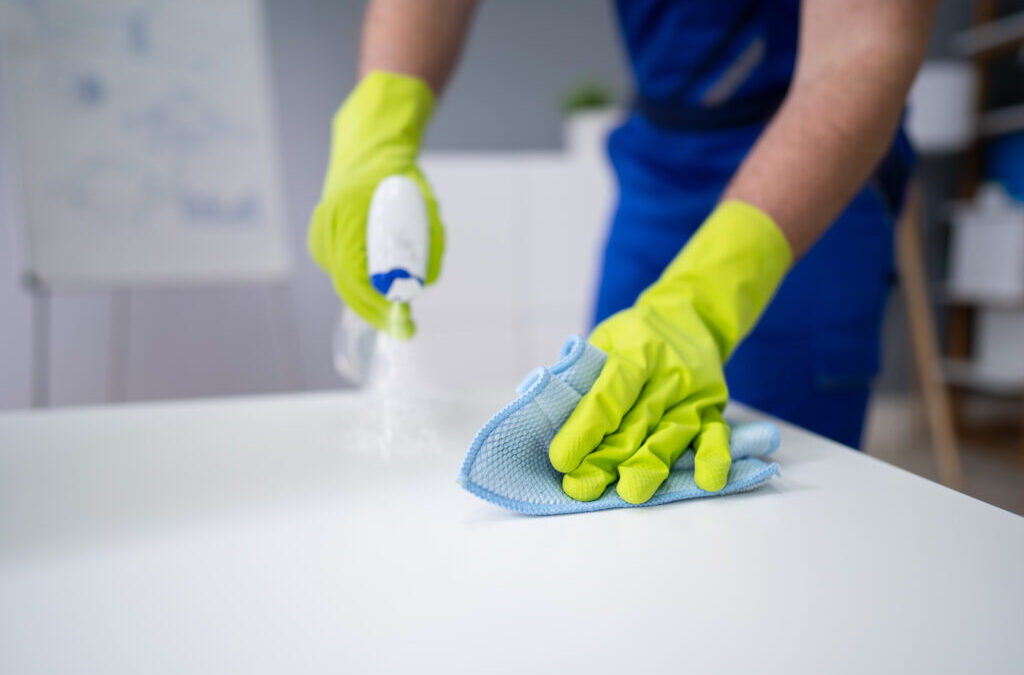In a world where hygiene and cleanliness have taken center stage, understanding the science behind effective disinfection is crucial for businesses, healthcare facilities, and even households. Disinfection goes beyond regular cleaning by targeting and eliminating harmful pathogens that can cause diseases. To achieve the highest level of safety and cleanliness, it’s important to grasp the principles and methods that make disinfection truly effective. Here’s a deep dive into the science behind effective disinfection.
1. The Difference Between Cleaning, Sanitizing, and Disinfecting
Before delving into the science of disinfection, it’s essential to distinguish between cleaning, sanitizing, and disinfecting:
- Cleaning involves the removal of dirt, dust, and impurities from surfaces, usually using soap or detergent and water. While cleaning reduces the number of germs, it does not necessarily kill them.
- Sanitizing lowers the number of germs on surfaces to a safe level as determined by public health standards. It’s less thorough than disinfection but still useful in maintaining a clean environment.
- Disinfecting involves using chemicals to kill germs on surfaces. Disinfection doesn’t necessarily clean dirty surfaces, but it’s the most effective method for eliminating pathogens and preventing the spread of infections.
2. How Disinfectants Work
Disinfectants work by disrupting the structure or metabolism of microorganisms, rendering them inactive or killing them outright. The effectiveness of a disinfectant depends on its active ingredients, the type of microorganisms it targets, and how it’s applied. Here are some common types of disinfectants and how they work:
- Alcohol-based disinfectants (e.g., ethanol, isopropanol) denature proteins and dissolve the lipid membranes of bacteria and viruses, effectively killing them. They are quick-acting but may evaporate too quickly, requiring reapplication on certain surfaces.
- Bleach (sodium hypochlorite) is a powerful oxidizing agent that kills a wide range of pathogens by denaturing their proteins and disrupting their cell walls. It’s highly effective but must be used with caution, as it can be corrosive and irritating to the skin and eyes.
- Quaternary ammonium compounds (quats) are cationic disinfectants that disrupt the cell membranes of bacteria and some viruses. They are commonly used in healthcare settings because they are effective and relatively low in toxicity.
- Hydrogen peroxide is another oxidizing agent that works by producing free radicals that attack and destroy essential components of pathogens. It’s effective against a broad spectrum of microorganisms and breaks down into water and oxygen, leaving no harmful residue.
- Phenolic compounds disrupt the cell walls of bacteria and the lipid envelopes of viruses. They are commonly used in household disinfectants and can be effective against a range of pathogens.
3. The Importance of Contact Time
For a disinfectant to be effective, it must remain in contact with the surface for a specific period, known as the contact time. This time allows the disinfectant to interact with and kill the microorganisms. Each disinfectant has its own recommended contact time, which can vary depending on the product and the type of microorganism being targeted. It’s crucial to follow the manufacturer’s instructions to ensure that the disinfectant works as intended.
4. Factors Affecting Disinfection Efficacy
Several factors can influence the effectiveness of disinfection:
- Concentration of the Disinfectant: Using the correct concentration is key. Too low a concentration may not kill all pathogens, while too high can be wasteful or even dangerous.
- Surface Material: Different materials can affect how a disinfectant works. For example, porous surfaces may absorb disinfectants, reducing their effectiveness, while non-porous surfaces allow the disinfectant to remain on the surface for the required contact time.
- Presence of Organic Matter: Organic matter like blood, dirt, or food residue can protect microorganisms from disinfectants. That’s why surfaces should be cleaned before disinfection to remove any debris that could hinder the process.
- Temperature and pH: The efficacy of some disinfectants can be affected by temperature and pH levels. For instance, some disinfectants work better at higher temperatures, while others may lose effectiveness if the pH is not within an optimal range.
- Microorganism Resistance: Some microorganisms, such as certain bacteria and viruses, have developed resistance to specific disinfectants. This resistance can be due to genetic mutations or the ability to form biofilms, which protect them from the disinfectant’s effects.
5. The Role of Disinfection in Preventing Infections
Effective disinfection is a critical component of infection prevention, particularly in healthcare settings where vulnerable populations are at higher risk. By understanding the science behind disinfection, facilities can implement protocols that maximize the effectiveness of their cleaning routines, ensuring that pathogens are effectively eliminated and the risk of infection is minimized.
Regular disinfection of high-touch surfaces, such as door handles, light switches, and shared equipment, is essential in reducing the spread of infectious diseases. In the context of pandemics or outbreaks, such as COVID-19, disinfection practices become even more crucial, requiring rigorous adherence to guidelines and the use of appropriate disinfectants.
Conclusion
Understanding the science behind effective disinfection is key to implementing practices that truly protect against the spread of harmful pathogens. By choosing the right disinfectants, ensuring proper contact time, and considering factors that influence efficacy, businesses, healthcare facilities, and homes can maintain environments that are not only clean but also safe and healthy. Regular, thorough disinfection is an investment in the well-being of everyone who enters your space, making it an indispensable part of modern hygiene practices.


Recent Comments